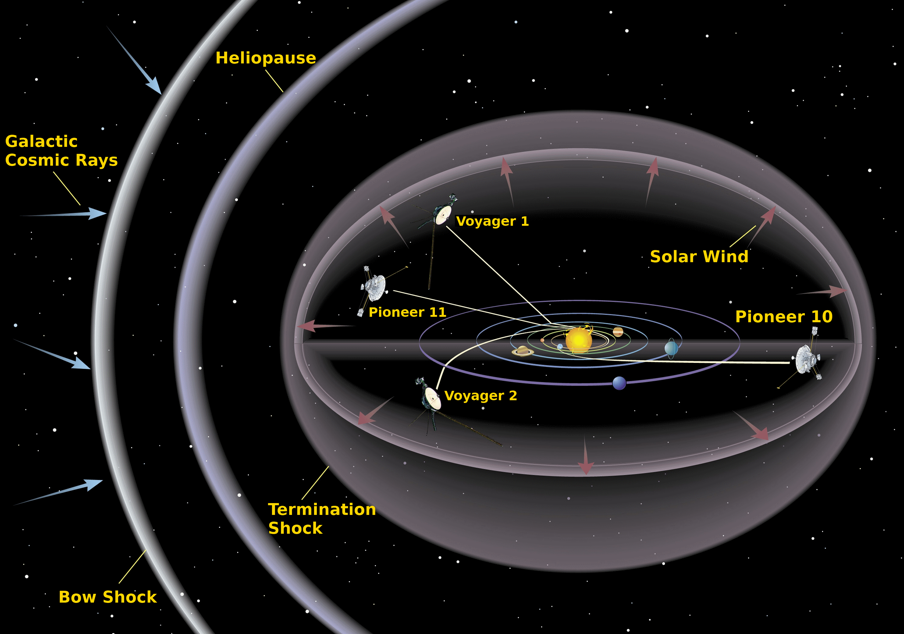Weak Sun Poses Radiation Risk for Mars-Bound Astronauts

Decreasing solar activity could make the journey to Mars and back riskier for astronauts, a new study warns.
The sun's magnetic field acts as a barrier to high-energy galactic cosmic rays, which originate outside the solar system in supernova explosions. The magnetic field is stronger when the sun is more active, deflecting more of this potentially dangerous radiation.
But the last "solar minimum," which occurred in 2009, was the weakest ever measured in the space age, and some scientists believe solar activity is going to weaken further — which would be bad news for manned missions through deep space. [Solar Quiz: How Well Do You Know Our Sun?]
The new study, which has been accepted for publication in the journal Space Weather, found that a 30-year-old male astronaut who flew to Mars during a period of low solar activity would surpass NASA's radiation safety limits in less than 400 days, which is barely enough time to get to the Red Planet and back. (A female would reach the limit in under 300 days.)
If the sun's activity continues to decrease as many researchers predict, the male astronaut's limit would be reached in under 320 days and a woman's in less than 240, the study determined.
"While these conditions are not necessarily a showstopper for long-duration missions to the moon, an asteroid or even Mars, galactic cosmic ray radiation in particular remains a significant and worsening factor that limits mission durations," study lead author Nathan Schwadron, of the University of New Hampshire, said in a statement.

Sunspots are generally used to estimate solar activity, because these patches on the sun are produced by magnetic field lines. As these lines twist and snap, they can produce solar flares and coronal mass ejections (CME) that send particles out into the solar system. These are all indications of a strong magnetic field on the sun.
Get the Space.com Newsletter
Breaking space news, the latest updates on rocket launches, skywatching events and more!
The sun has an 11-year cycle of sunspots and solar activity, but the last minimum in 2009 was the weakest ever seen since the space age began in the 1950s. Even the peak this year has been somewhat subdued. Some researchers believe the sun's next minimum of activity could be even lower than 2009.
The new research also used data from NASA's Lunar Reconnaissance Orbiter (LRO) to estimate how much time it would take for an astronaut in deep space to exceed radiation limits. Measurements came from LRO's Cosmic Ray Telescope for the Effects of Radiation (CraTER), which has a material called "tissue-equivalent plastic" that reacts to radiation as human muscle would.
Variations in radiation limits depend not only on solar activity, but also on how old the astronaut is, the study authors noted.
Follow Elizabeth Howell @howellspace, or Space.com @Spacedotcom. We're also on Facebook and Google+. Original article on Space.com.
Join our Space Forums to keep talking space on the latest missions, night sky and more! And if you have a news tip, correction or comment, let us know at: community@space.com.

Space.com is the premier source of space exploration, innovation and astronomy news, chronicling (and celebrating) humanity's ongoing expansion across the final frontier. Originally founded in 1999, Space.com is, and always has been, the passion of writers and editors who are space fans and also trained journalists. Our current news team consists of Editor-in-Chief Tariq Malik; Editor Hanneke Weitering, Senior Space Writer Mike Wall; Senior Writer Meghan Bartels; Senior Writer Chelsea Gohd, Senior Writer Tereza Pultarova and Staff Writer Alexander Cox, focusing on e-commerce. Senior Producer Steve Spaleta oversees our space videos, with Diana Whitcroft as our Social Media Editor.









